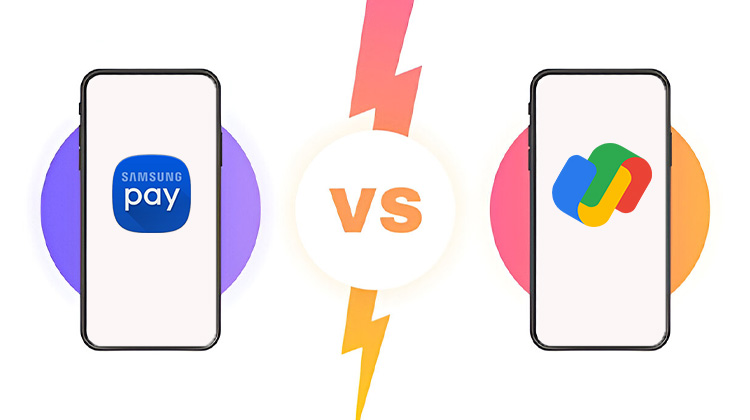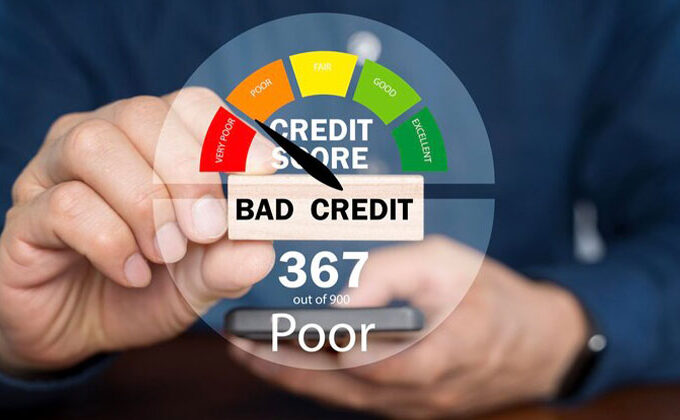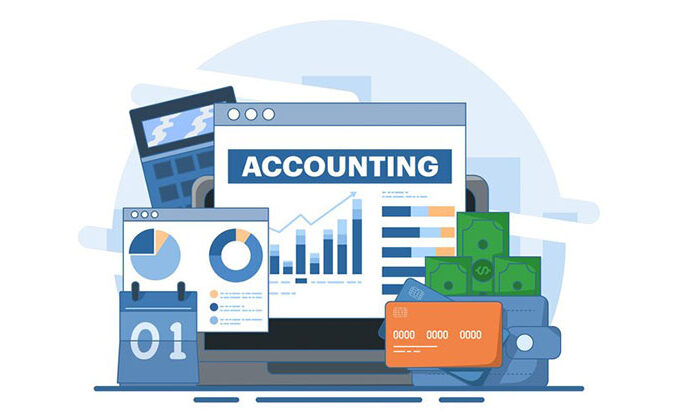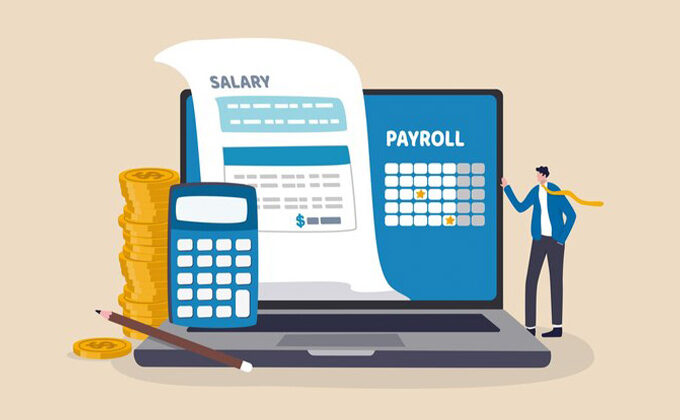In the world of online and mobile payments, Samsung Pay vs Google Pay stand out as two of the most prominent contenders. While there are many others but these two payment giants are causing waves and providing easy payment to millions of customers across the globe.
If you’re unfamiliar with the possibilities of making contactless payments, then you’ve come to the right spot. In this article, we will pit Samsung Pay and Google Pay against each other, equipping you with the details to make a well-informed decision.
Read on to know more about these payment giants and find out the most suitable choice between Samsung Pay vs Google Pay.
Google Pay and Samsung Pay both offer contactless payment services that allow users to make secure transactions through their mobile devices. They’ve been on the market for a long time and provide stability and reliability.
These can be described as accessible via mobile apps, which can be installed onto smartphones and used for payments in person and online. There are some important variations to keep in mind.
What is Samsung Pay?
Samsung Pay came onto the mobile payment scene in the year 2015. In the nine years since its introduction, the app has gone through several changes, with one of the most prominent being its integration into the Samsung Wallet umbrella.
Since 2022, Samsung has integrated Samsung Pay into its broader Samsung Wallet platform. This expanded digital wallet not only supports mobile payments but also allows users to store digital keys, IDs, boarding passes, and more — creating a unified and convenient payment experience.
Pros and cons of Samsung Pay
Each of these giants has its advantages and drawbacks. Let’s consider Samsung Pay as a starting base.
First, and on the positive aspect, it provides near-field communications NFC technology and magnetic secure transmission (MST) technology in its older handsets.
One of the unique features of Samsung Pay is its compatibility with magnetic stripe terminals in addition to NFC readers. This means you can still make payments in stores that don’t use NFC, making Samsung Pay more versatile in certain situations.
In addition, it provides PayPal for purchase in-store. It also works with smartwatches and comes with a competitive incentive program. However, Samsung Pay is only available on Samsung devices, which excludes users of other Android smartphones from accessing its full capabilities.
What is Google Pay?
The Google Pay application was created in the year the year 2018 and was merged into Google Wallet in 2011 and Android Pay in the year 2015. In the year 2022, Google Pay is now referred to in the form of Google Wallet, which is also a digital mobile application and a wallet that allows for more secure transactions on a smartphone.
Pros and cons of Google Pay
Google Pay, on the contrary, is accessible for Android and iOS users and is not only available on Samsung mobile phones. It also allows you to connect your Mobile account with an account in a bank using PayPal.
Another benefit is that it gives historical transactions and trends in the way people spend their money. It’s also employed for online shopping. However, it places limitations on transactions, which can result in a limit for certain types of customers.
Key Difference: Samsung Pay vs Google Pay
Although they share many similarities in appearance, these two wallets do have some distinctions. We will look at some important distinctions to assist you in making an informed decision.
Installation and device integration
Samsung Pay only works on Samsung phones. But Google Pay, as part of the Google Wallet app, works across a variety of Android devices, which includes most Android phones.
Concerning the installation process regarding installation, the two apps, Samsung Pay and Google Pay are simple to install and use. Simply download the application from the app store of your choice and follow the steps for verification, which include confirming that you are who you say you are and adding debit or credit cards.
Payment methods and flexibility
Discussing payment options and their flexibility, Samsung Pay vs Google Pay:
- Samsung Pay: Contrary to Google Pay, which solely utilizes NFC, Samsung Pay can be used in a variety of locations because it is compatible with both MST and NFC technologies.
- Google Pay: Google Pay, on the other hand, is a payment system that uses NFC to make transactions. Although NFC is extensively used across many regions, it’s not as widespread as MST. However, Google Pay supports a wide range of payment options, including debit and credit cards, bank transfers, and digital gift cards.
Data security
When you’re using the Samsung Pay app or Google Wallet, and you want a secure payment method, both platforms offer reliable and encrypted options to protect your transactions.
But, Samsung Pay takes security one step further thanks to it’s Knox program, which continually examines your phone for transactions that are suspicious. Moreover, it keeps your information secure, and ensures that your credit card details are not transferred to the store where you made the purchase from.
In addition, along with built-in security and encryption of data, Samsung Pay offers users a great level of protection for their financial details.
Rewards
If you choose to use Google Pay or Samsung Pay, each offers a variety of rewards and benefits. For instance, when you purchase additional Samsung merchandise, Samsung Pay provides cashback offers and discounts for certain merchants. Google Pay, as a component of Google Wallet, also provides certain reward programs where customers can earn rewards when they spend using Google Pay.
Final Verdicts — Samsung Pay vs Google Pay
Samsung Pay, as part of Samsung Wallet, and Google Pay, as part of Google Wallet, are both highly dynamic and popular digital mobile wallet options.
Samsung Pay vs Google Pay are both safe and are accepted at a multitude of international locations that accept NFC payments. For merchants, it is a relief that you don’t have to be able to accept either. You can accept both, thereby creating a larger payment network and providing your customers with greater comfort and ease in the process of making payments.















Leave a comment